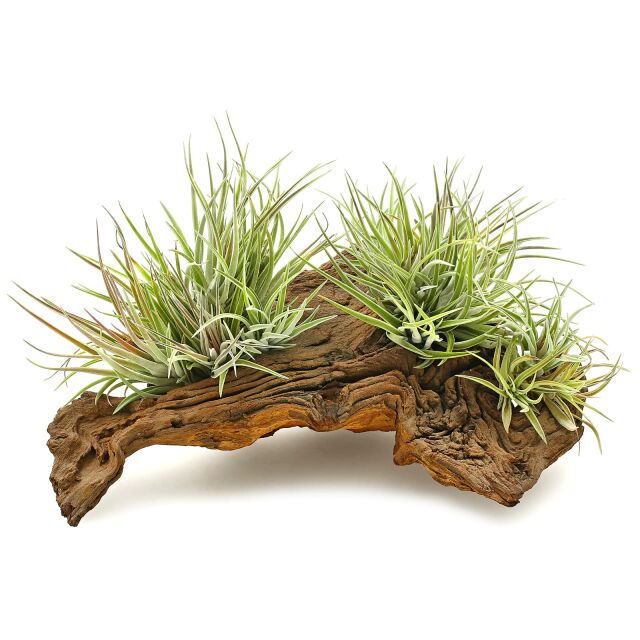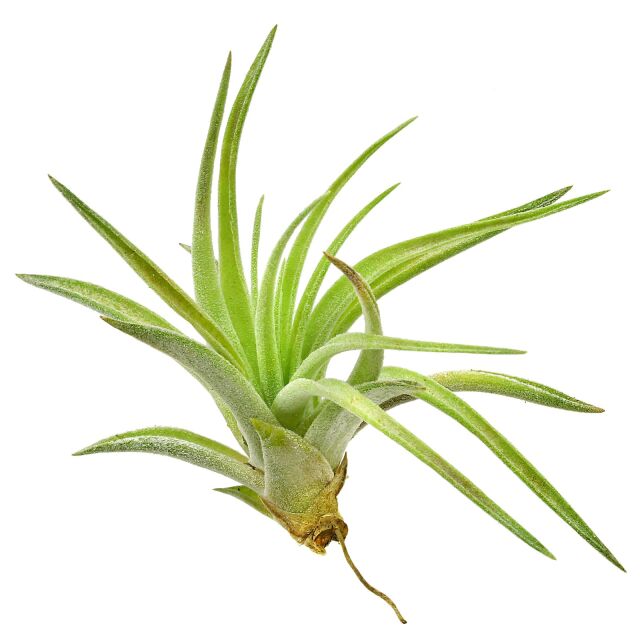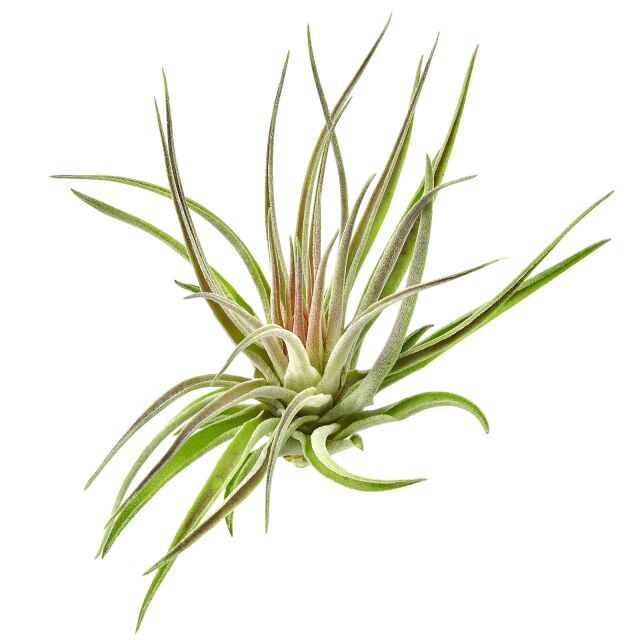Kamm's Tillandsia






Tillandsia kammii
Kamm's Tillandsia
- Epiphyte from Central America
- Dense silvery grey-green leaf bushes
- Up to about 15 cm high
- Short red inflorescence, purple flowers
- Suitable for tropical dry forest terrariums
Unfortunately, we can only ship this product within the EU.
Item question
We’re here for you!
Please enter your question and e-mail and we’ll contact you as soon as possible. It usually takes us up to 24 hours during business days to respond.
Thank you for your question!
Thank you, we’ll get in touch!
Close window
You already sent us a question.
Please wait a few minutes
Description
Tillandsia kammii is a very decorative, relatively small epiphytic plant densely covered with many silvery grey-green leaves. It was named after its discoverer E. Kamm and described as a new species by W. Rauh in 1977. The species is native to Honduras and El Salvador. It occurs singly or in groups as an epiphyte on trees in a tropical savannah climate, at altitudes of 500 - 1200 metres, at temperatures of around 14 - 35 °C and with an annual rainfall of around 1400 mm. T. kammii differs from the similar species T. velutina and T. plagiotropica in having larger, more densely arranged trichomes (scales) and longer, narrower, more flexible leaves. The rosette of leaves is about 10 - 15 cm high, the leaves are groove-shaped in cross-section and silvery-velvety due to the dense scales. he wiry roots serve as a support when the plant comes into flower, a short inflorescence with bright red bracts and tubular purple flowers appears. After flowering, daughter rosettes develop, the mother rosette dies later.
Tillandsia kammii is protected by the Washington Convention on International Trade in Endangered Species of Wild Fauna and Flora (CITES Appendix II) alongside four other Tillandsia species. The T. kammii we offer originates from horticultural propagation and may only be traded within the European Union.
T. kammii is a xerophytic epiphyte. As a "desert" or dry tillandsia, it is one of the "grey" tillandsias and prefers a very light, airy place in the terrarium without permanent humidity.
These "air plants" only absorb nutrients and water from the atmosphere with the help of many small suction scales on their leaves. The roots serve as an adhesive organ. The plant is attached to hard materials such as wood or stone.
Spray the tillandsia two to three times a week with soft, dripping water or immerse it. In the meantime, it should be allowed to dry off.
Ideally, an orchid and tillandsia fertiliser should be added every second watering during the spring and summer.
Like almost all tillandsias, this plant also forms several "pups" at its base after flowering.
These can be carefully separated when they are about a third of the size of the mother plant. If they are not separated, they will grow together to form a larger cluster.
The densely leaved bushes of Tillandsia kammii look particularly beautiful as tufts on epiphyte branches, otherwise they can be attached to any surface such as back and side walls.The species can be integrated wonderfully into medium-sized, moderately dry to moderately moist terrariums that are modelled on tropical dry forests and savannah habitats.
Profile
| Tillandsia kammii | |
| Cultivation Options | Epiphytic |
| Growth heigh | Approx. 10 - 15 cm |
| Temperature | Approx. 14 - 30 °C |
| Humidity | At least 60% |
| Light requirement | Bright light, no direct midday sun for daylight cultivation |
| Watering | Soft water; approx. 2 - 3 times per week per spraying or once a week by dipping; allow to dry off between waterings |
| Fertilization | In spring and summer, with every second watering, orchid or Tillandsia fertiliser |
| Propagation | Formation of pups after flowering |
| Suitable for | Tropical dry forest terrariums, savannah terrariums |
| Cultivation Options |
| Epiphytic |
| Growth heigh |
| Approx. 10 - 15 cm |
| Temperature |
| Approx. 14 - 30 °C |
| Humidity |
| At least 60% |
| Light requirement |
| Bright light, no direct midday sun for daylight cultivation |
| Watering |
| Soft water; approx. 2 - 3 times per week per spraying or once a week by dipping; allow to dry off between waterings |
| Fertilization |
| In spring and summer, with every second watering, orchid or Tillandsia fertiliser |
| Propagation |
| Formation of pups after flowering |
| Suitable for |
| Tropical dry forest terrariums, savannah terrariums |
Terrarienpflanzen
Our terrarium plants give every terrarium an individual, natural atmosphere and at the same time provide a healthy environment for all terrarium inhabitants. Our wide range of tropical, subtropical and even arid plants are easy to combine and enhance any terrascape. Whether it's strong succulents, subtle tillandsias, eye-catching neoregelias or wonderful orchids - we offer terrarium plants for different terrascapes from rainforest to desert.
General information
| Item no. |
|
| EAN | |
| Weight | 0,02 kg |
| Shipping weight | 0,11 kg |
Customers ask customers
You have questions about this product? Ask other customer or our support team about this product!